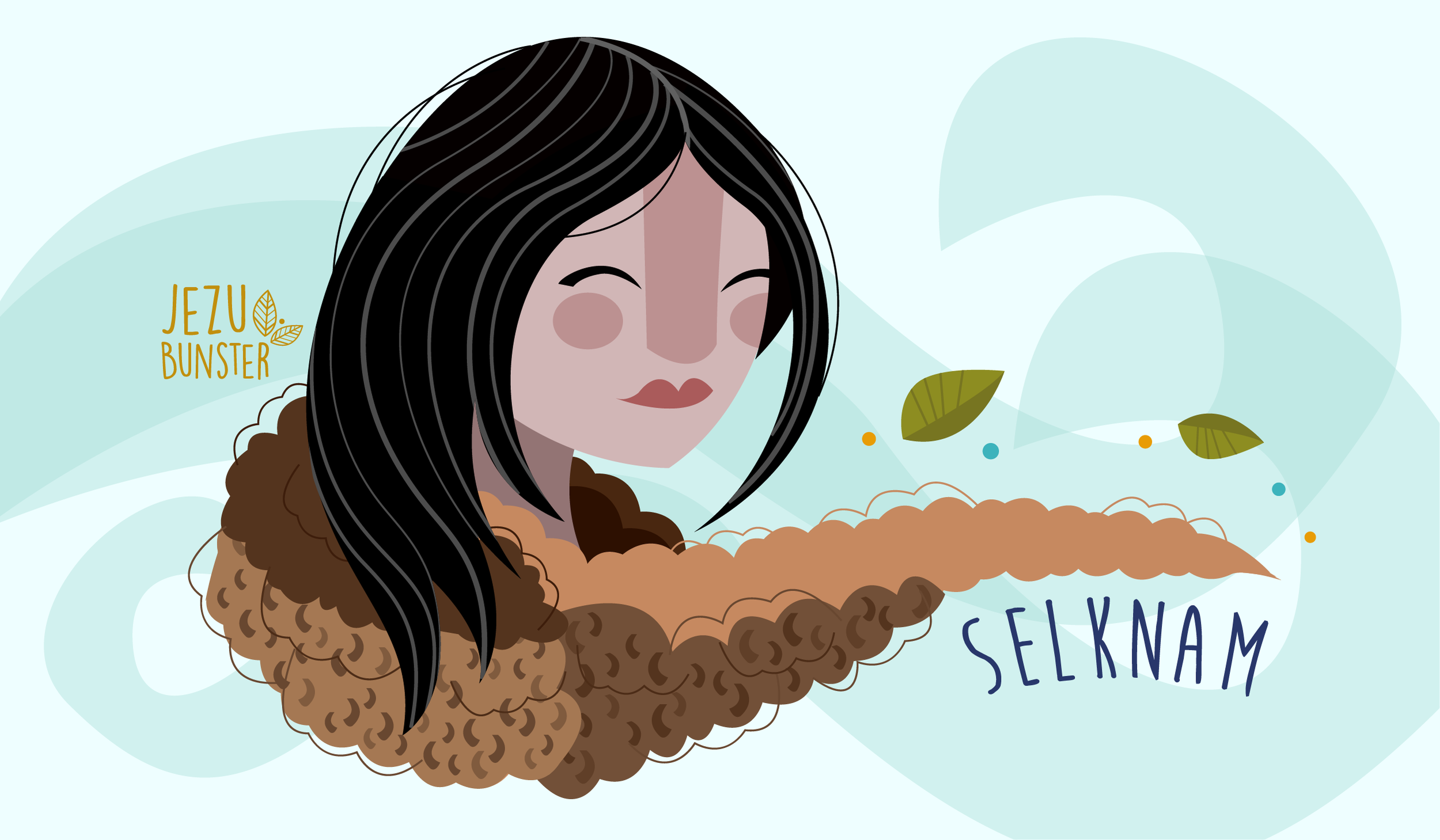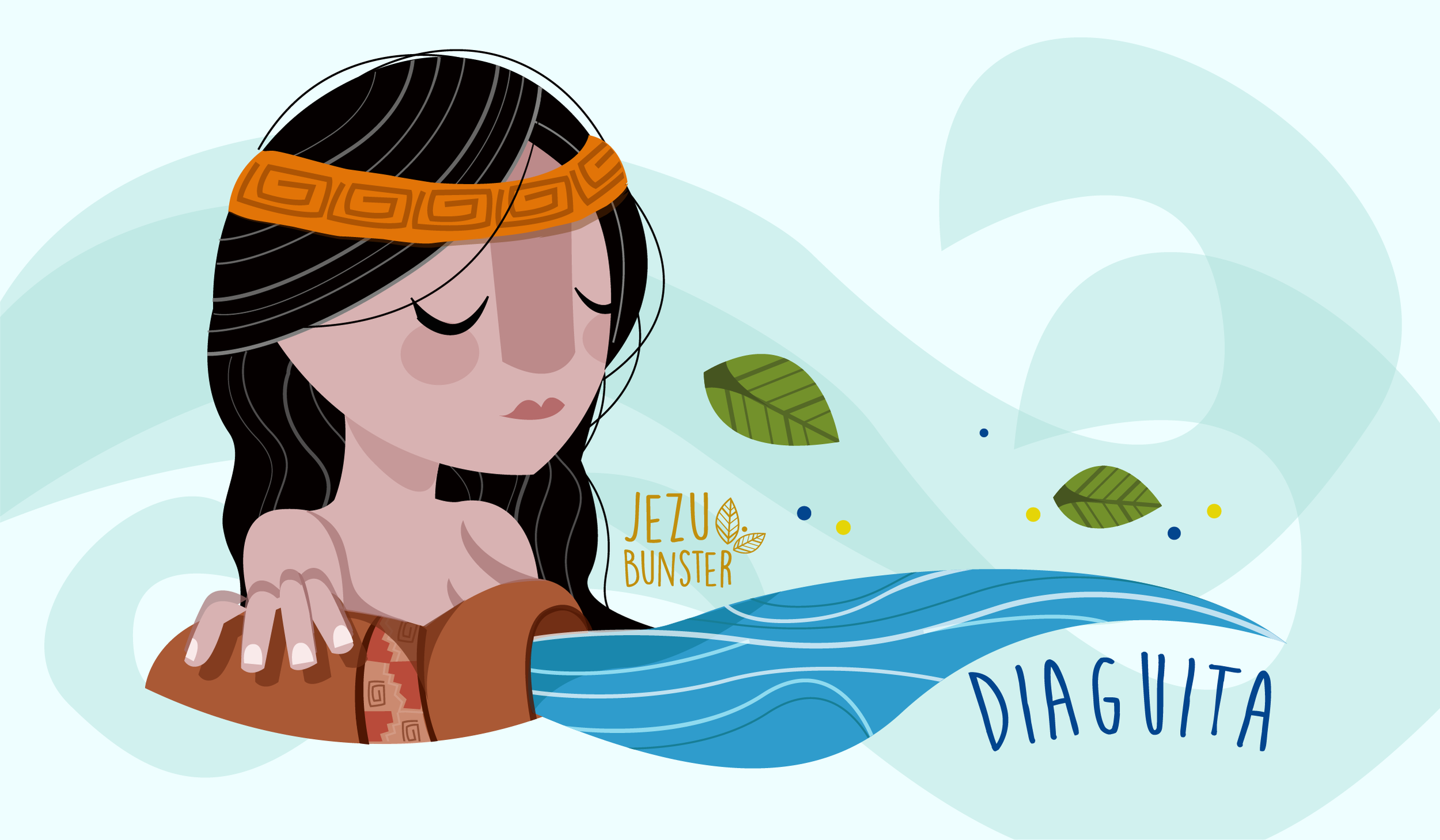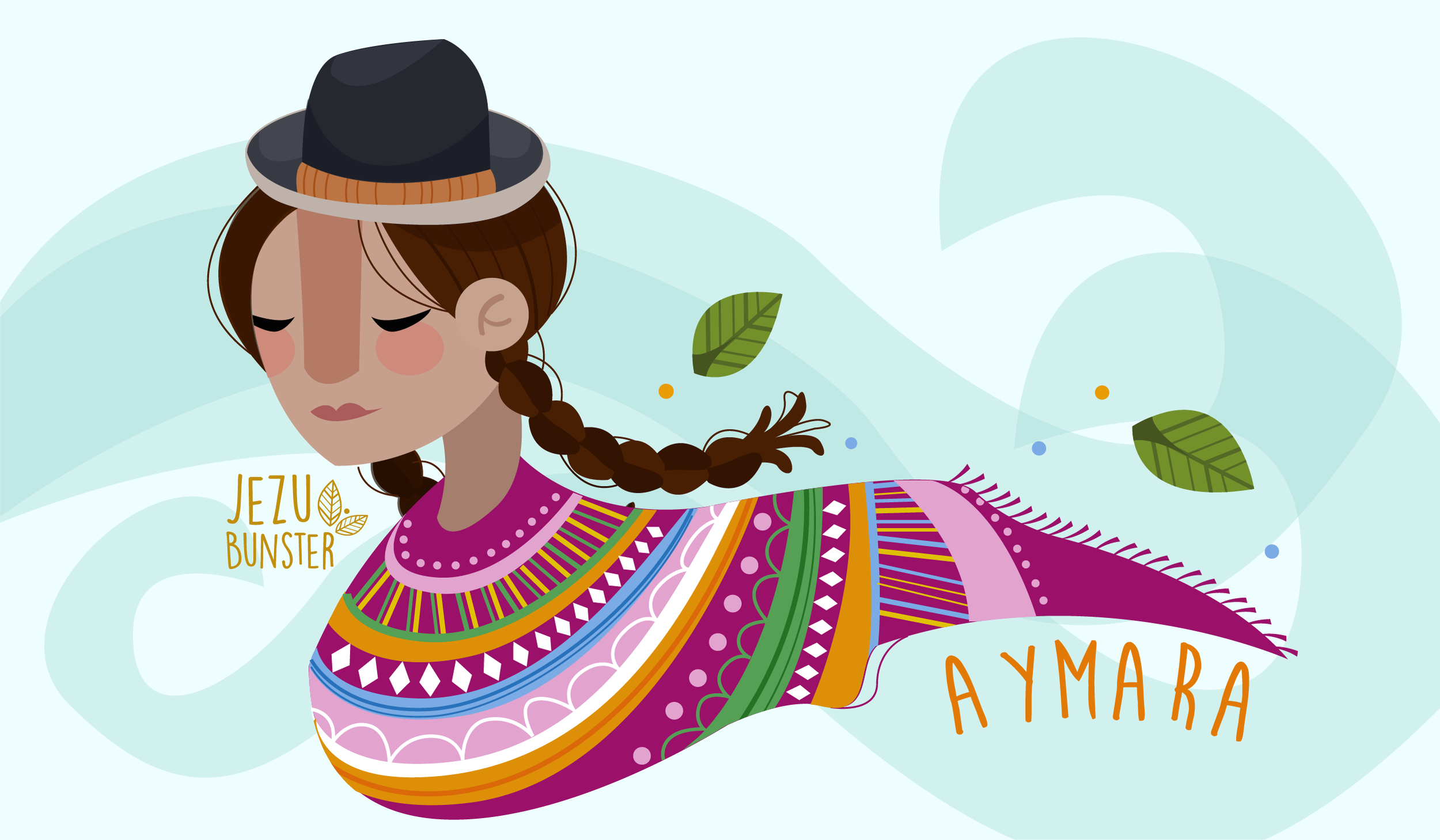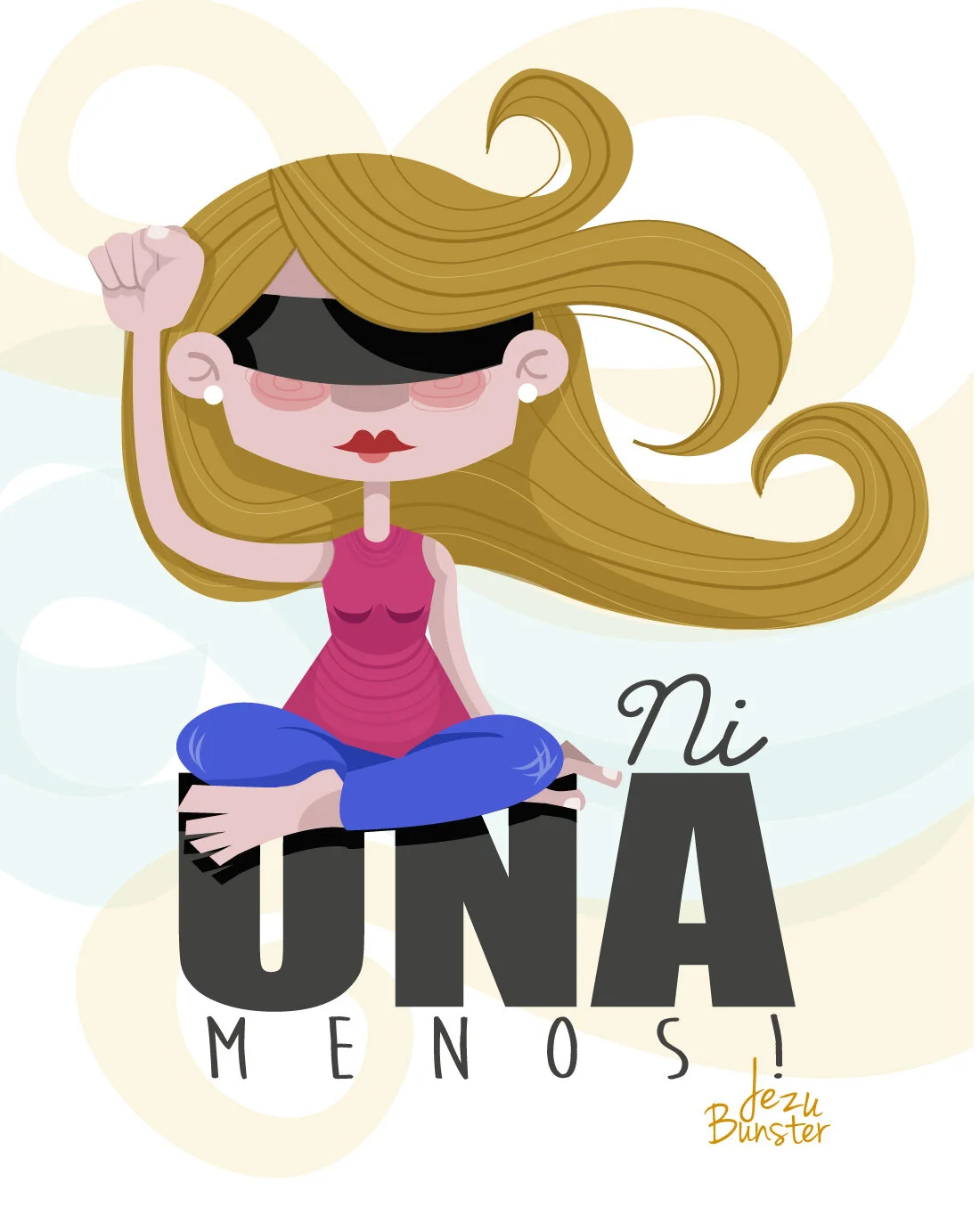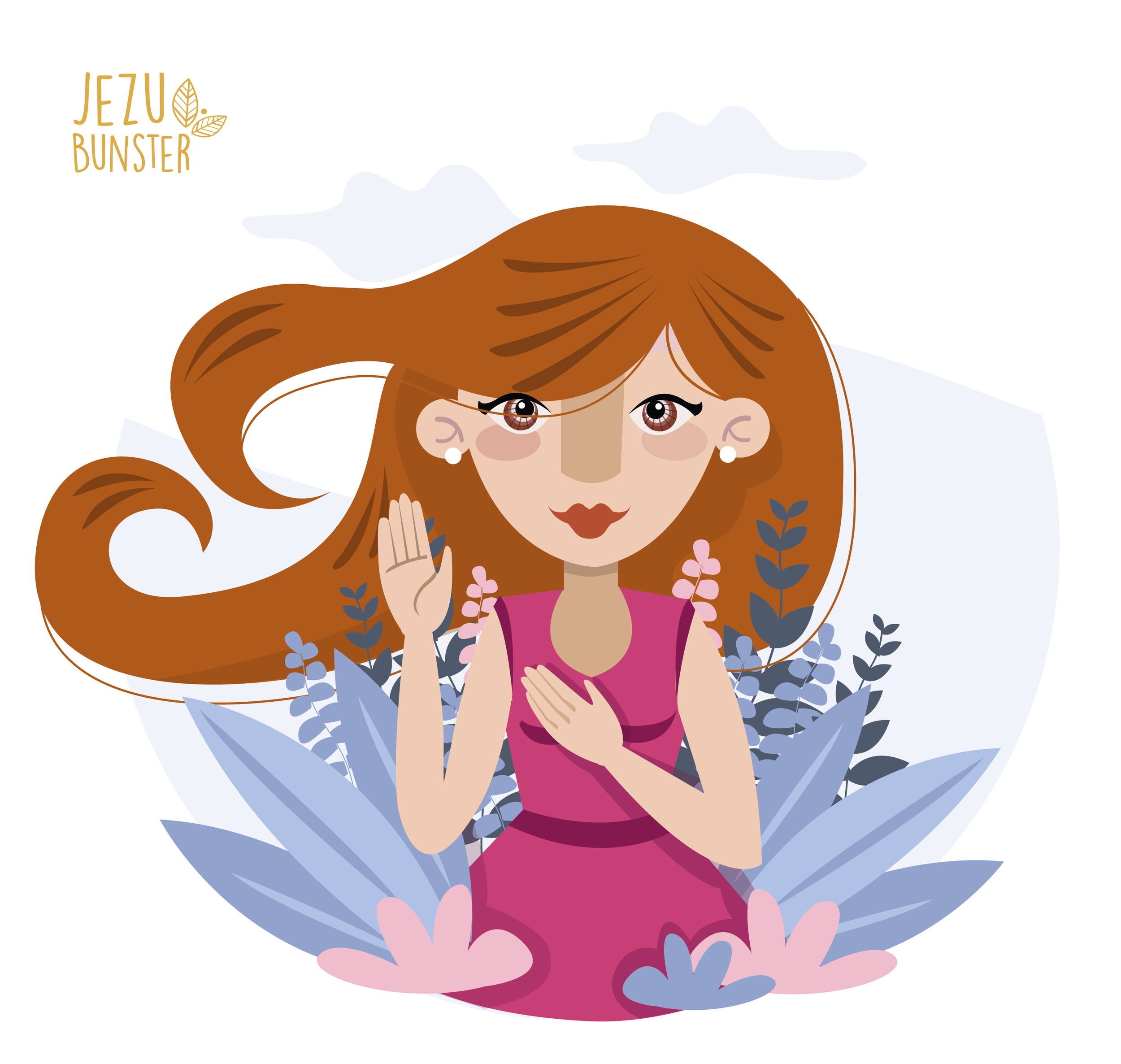On Illustration, Design, and Responsibility
An Interview with Jezu Bunster
Jezu Bunster is a Chilean graphic designer and illustrator who might not consider herself an activist but many of her projects address social and societal issues and call for justice. I asked Jezu about her path to the world of art, her way of creating, and Chilean design among other things.
Some people know at a very young age what they want to be once grown up, others may change their mind along the way. What’s your story?
As far as I can remember, I always drew something. I was creative and very artistic, and I was always looking for ways to do some arts and crafts with whatever I could get my hands on. In school, I attended all the art courses and participated in all the drawing contests. My mom took courses on art techniques, restoration and painting as we grew up, so I could always see her doing different things, and there were always sheets of paper, paintings, colors, brushes, and materials of all kinds in our home. I started studying graphic design in 2008 and that is when my journey as an illustrator began. The people around me were talking about web design and multimedia, expecting that their prevalence would come, so they all applied to become digital designers, but I did not. I was interested in editorial design and I knew I wanted to create book designs and computer graphics. I wanted to keep drawing… For my degree project, I designed a book about type 1 diabetes for beginners.
Jezu Bunster
You studied at the Duoc UC. What do you consider the most valuable piece of advice you were given there?
Fortunately, both in high school and at the university I had teachers who encouraged me to ask questions. They taught me to trust myself, to be aware of my abilities and to believe in them since those are important tools that can help you decide what to become or what to do in life. The years spent at Duoc UC made me stronger and the most important thing I learned was not to compare myself to other designers. They taught me to believe in my art because it’s mine and that I should listen to my intuition and not follow suit and embark on a journey that may promise more money (like working on apps) yet doesn’t feel right. I was skeptical about whether what I wanted to do was the right way to go or not…
How did your career and craft develop once out of university?
I was able to get jobs as a graphic designer at various companies, but illustration was neither a necessity nor an option, so I started freelancing on the side. I was specifically looking for projects where I could propose and work on illustrations. In the beginning, I made digital illustrations using Photoshop, but I wasn’t completely convinced that Photoshop was the right tool for me. This might have had something to with my lack of knowledge of the software. Eventually, I got into vector design. It’s so simple and clean. I love it! My first big project titled Mujeres Indigenas (Indigenous Women in English) gave me the confidence to believe that I was actually good at it: I was able to execute the ideas how I imagined them.
A few years ago I interviewed a Chilean lettering artist who said that “Chile doesn’t have a clear social and cultural identity,” emphasized the country’s diversity, and explained how lettering artists were influenced by other countries’ traditions. How do you see your country and its design and illustration scene?
Chile is a country with a beautiful culture. The problem is that we have not made it our own. Our Native Peoples’ cultures are rich in arts, music and cuisine, but we are a country that once was a Spanish colony and it seems we’re stuck with the idea of being more European than South American. Chile also has a highly capitalist society and we consume art that comes from outside. We love it if it’s “gringo”, we love it if it’s European, but if it’s something national, it doesn’t have the same impact. I think the new generations have changed this a bit, though. Our Native Peoples, cultural history and local artists receive more appreciation nowadays. Chile’s social crisis has given these new Chilean artists a space on the streets of Santiago that are once again filled with culture, dance, music, and street art.
What position do you think Chilean design and illustration hold in the context of South America, the Americas, and the world?
Great exhibitions are organized; illustrations, drawings, lettering, and mural art get more visibility. The truth is that, when it comes to graphic design, we lag behind compared to countries such as Argentina or the United States that are known for their great design and advertisements. In Chile there are a lot of talents across disciplines, but I’d say we are more valued outside of our own country. The good thing is that we live in a digital era. The Internet has democratized things a little bit and has made it possible for us to show our work to the world. We can present our professionalism, artistic quality, and originality. Today we are making more noise than ever before, thus making ourselves more seen, too.
For a few weeks at least, international news sites covered the massive demonstrations in Santiago, which shed light on the great inequalities in the country. I would assume that the current situation puts even more pressure on everyday people, including artists, designers and other creators. How has the crisis affected your work?
Crises and historical, political, climatic and social milestones are opportunities to say something, to send a message regardless of the art form. Personally, it inspires me a lot. I write a thousand lyrics, I draw things to express what I want to say and what I wish people would see, things I’d like to share with people who are in quarantine around the world. Things I have inside me and I can only show them to the world through drawings and music.
Zen
You specialize in editorial, corporate, and branding design. Why do you enjoy working on these types of projects the most?
Editorial design is my favorite territory in the world of design. I love books and information that is communicated in a way that is a pleasure to see and read. While tapping into the field of editorial design, I came across computer graphics that blew my mind. I enjoy organizing information and thinking about how I could include illustrations in projects, how I could make a page look better or more dynamic, or childish, or very serious and formal, how I could organize, distribute and conceptualize the information to transform it into computer graphics, etc. I also really enjoy the creative process of branding. I love looking for names for new brands and then experiment with ideas, concepts, and images. I’m excited to participate in the birth of something new to help people’s dreams come true: to renew the image of an organization or innovate products. Corporate design is not my favorite even if it’s one of the areas I’ve gained a lot of experience in.
Your main areas of interest are health, education, and culture. What excites you about these fields?
I am excited about them because I believe there is still much to do in these fields. We still have tremendous challenges to improve health, education and culture, especially in Chile. These are the three areas to which I feel I could contribute with my art. I’m interested in health because I have type 1 diabetes and I had to read several technical and boring books about it. They were not reader-friendly at all and had only a few graphics in them. That is what motivated me to design the children’s book I mentioned earlier. I like to work on projects related to education because children need us to look for new ways to enhance their learning process instead of the old formats, structures and content. As for culture, I love all forms of art and I have worked with musical projects, theater, dance, and photography. I’m always eager to participate in another artist’s project.
Mother Nature
You clearly address societal issues in your work. You write that you are passionate about “messages of justice” and want to work for good causes. You’ve also uttered your passion for humanity and environmental issues. Climate justice, for example, calls for justice for Indigenous peoples and other marginalized groups. One of your projects specifically centers on Indigenous Women. How did it come about?
Yes, I have a strong call for justice and service. In all my artistic expressions, I try to address issues that I think are important, to say things about love, the planet, respect, coexistence, and consciousness. I embrace women, children, animals and nature to express those feelings and realize those concepts. The Indigenous Women (Mujeres Indigenas) project started in 2015 when I was left without a job and one of the freelance projects I landed was the logo of an Indigenous woman. I started sketching and putting together ideas. In the end, it was useless for a corporate image, but I liked how it looked, so I decided to make a collection of Native women of Chile. The idea is to illustrate all Native groups in the Americas. It’s definitely a project that will take more time to finish. I also made illustrations to support the island of Chiloé that experienced a major red tide crisis caused by pollution. Ni una menos (Not One [Woman] Less in English) is an illustration to honor Nabila Rifo, a woman who survived an attempt of femicide (violence against women). And I designed illustrations for some other causes as well.
A Chilean performance piece (Un violador en tu camino/A Rapist in Your Path) went viral earlier this year. At the beginning of March, more than a million women marched on the streets of Santiago to call attention to femicide. And because you focus your work on children and women, I’m interested to hear your thoughts on design (and art) and activism. Do you consider yourself an activist perhaps? What can be achieved in society through art and design?
Yes and no. There are people MUCH more active than I am, people who are on the front lines. I am an activist with my art and with my message. I defend an ideology, a feeling, a principle, and I defend it to death. I condemn certain things and I take a clear position on issues. In this regard, you could say that I’m an activist: I use my art to show what I think and what I believe in, things the great majority of the planet’s population knows and believes in, too. There is too much to say! How can I not say something? At least using the talent and the tools I have. I strongly believe that we can generate awareness and question things with just an image, a drawing, a lettering piece, or computer graphics. You have the possibility to create visual resources thousands or millions can see and to whom your message can mean something or can evoke something in them.
Ni una menos
Looking at your illustrations, one can notice the vivid, rich and intense colors right away. What is your creative process like?
I rely a lot on intuition. Nowadays I often have concrete ideas, sometimes even sketches, but I usually open Illustrator and start composing and putting together ideas and shapes. I usually work with a palette of colors, very defined, that I simply like. It just happens that I like colors that may produce more sensations. There are colors and combinations of colors that make me thirsty, feel sorry, anguish, or even emotional. I follow my hunch not a formula or psychological tactic when choosing colors. I’ve read a lot about colors, but I don’t research them when working on a project. As part of my creative process, I usually study references, direct and less direct ones, see what is happening outside in the art world, read about design trends, technological advances, medicine, etc. I also look at portfolios, magazines, art history books and I watch video clips. I nourish myself with ideas and then I go on to sketch or compose some myself.
What difference does it make when you work on a project for children or adult audiences, if any?
I think there is not much a difference, the creative process is practically the same. Sometimes it’s rather difficult for me when the project must be very formal or more “masculine” because I inevitably have feminine hands that are more playful. The color palettes may show some differences. In the beginning, I often did childish faces. With time, I had to start drawing women and men that didn’t look so “childish”, and I added mustaches, glasses, among others characteristics. This is how the “adult” illustrations came into the picture.
Resiste Chilote
Speaking of children… If you could give some advice to your younger self, what would it be?
Never doubt yourself, your talent and your intuition, and never think that you’re not good enough just because others don’t see it. Also, don’t compare yourself to others and never despair, your opportunity will come when it is time. Keep working hard on what you love, listen to your guts, but be patient, your work and effort will bear fruit. And the most important thing: no work in the world is worth that much that you stop doing what you really love.
When did you realize that you had found your voice?
Growing up, I questioned and asked about everything. I knew that some things were not right. I had a lot of arguments with my grandparents, my parents and many of my teachers, because I always spoke so much and wanted to understand everything all the time. I don’t know whether I’ve found my voice yet, but I say and do what I feel with the gifts and tools the universe has given to me. I try to make my art consistent with my feelings. I do feel that we have to change things, that we have to fight for justice with our own cry from whichever path we’re on. We can all say and/or do something that can make a difference for someone else.
Todas Juntas | All Together
What are your sources of inspiration?
Anything can be a source of inspiration. I’m an extremely sensitive person, and I like things that might seem small and ephemeral. I am observant, patient, detail-oriented… I like listening to melancholic music and looking at old photos. I also like silence, gray days, rain, my dogs, nature, peace, and the idea of living more connected and of a better, fairer tomorrow.
What are your strategies to overcome creative blocks?
The world is a huge place to search for a way out of creative blocks. There are all kinds of stimulus available to try out: to observe, to nourish oneself, to go out and search for new ideas and inspiration. Everywhere… In music, cinema, paintings, sciences, innovation, architecture, photography, etc. Stagnation is something mental, a state a person can’t get out of because they haven’t looked hard enough to find answers.
Retrato de una bruja | Portrait of a Witch
You have also shown your talent working on murals, and your illustrations have been displayed on various surfaces. Which one has challenged you the most?
Doing murals is a huge challenge. I love them, but they require logistics, which I don’t like so much. I also illustrated some cloth dolls not a long time ago. That is another way of expressing and delivering messages. I like how my illustrations appear in a three-dimensional format, printed on a textured material, but it challenged me technically. I recently started venturing into the world of hand-poked tattoos that is tattooing without a machine. It is the most difficult form of tattooing.
What are you working on right now?
I’m working on a coloring project titled Children of the World, a collection of children of different ethnicities. Aside from that, several personal illustration projects are in progress. All of them with messages related to world issues. I’m still employed by a Chilean company, although I hope I can change soon to do more illustration projects. I’m also working with a Chilean app that addresses the issue of violence against women and aims at building a supportive community of women. It’s called Voy Contigo (I Go with You in English). It’s been a huge success. I also try to keep up the production of dolls, making a couple of them every month, and I’m involved in a lovely and entertaining musical project we’ve been working on for about two years.
What are your plans?
I don’t know!! I’d say I’ve got an ideal plan but I also believe that everything can change in a second, that you have to go day by day and breathe and calmly decide what you want to do, what you need to do — for yourself, for your health, for your body. We should ask ourselves what to do to achieve our dreams or to be finally able to do what we want to do so much. In the short term, I would like to achieve financial stability as a freelance illustrator and/or work on some editorials or with foreign companies remotely. I would also love to travel and have the experience of living abroad. I have the feeling that it could go very well. I’m looking to move to a place with a colder climate, something quiet and lonely.


